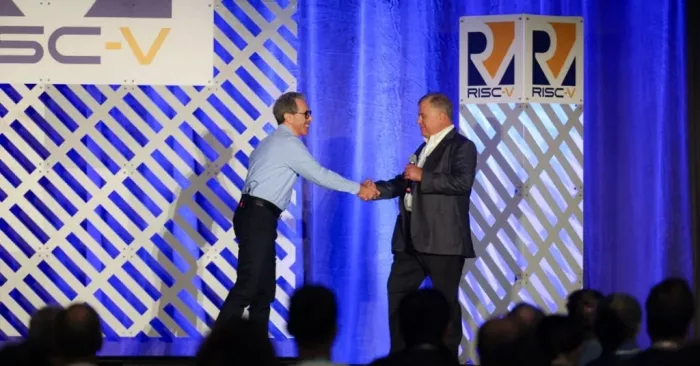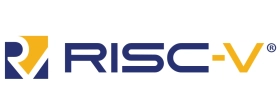RISC-V Takes First Step Toward International Standardization as ISO/IEC JTC1 Grants PAS Submitter Status
RISC-V is an industry standard, like USB or Wi-Fi. The specifications are publicly available under the Creative Commons license and every engineer, wherever they are in the world, can use them to design their products locally, while engaging with the global RISC-V ecosystem.
This standard is defined by RISC-V International and its members. Decisions are voted upon collectively, ensuring every member is heard. It’s a model that has worked for us for many years, ensuring any updates to the RISC-V ISA happen transparently, without breaking existing designs, and always in service of the broader ecosystem.
The RISC-V ISA is already an industry standard and the next step is impartial recognition from a trusted international organization.
Today, I’m excited to announce that we have taken that first step. RISC-V International has been approved as a recognized PAS (that’s publicly available specification) Submitter by the ISO/IEC Joint Technical Committee (JTC 1).
This means we’re able to submit draft international papers, starting with the The RISC-V Instruction Set Manual, for consideration as true, international standards.
Trusting the Process
Since 1987, JTC 1 has overseen the standardization of many foundational IT standards, including JPEG, MPEG, and the C and C++ programming languages. It has also granted JTC 1 PAS Submitter status to consortia similar to RISC-V International such as Khronos, W3C and Oasis, all of which share our desire to make technology more accessible, fair and transparent.
The positive outcome of JTC 1’s ballot confirms that RISC-V International meets all expectations for an organization that will be able to submit PASs. If the ballot is successful, these specifications will be transposed into globally recognized ISO/IEC standards.
Proving our worth required a comprehensive application process, detailing how we are organized, what our policies and procedures are, and how we collaborate with our member base to evolve the RISC-V ISA’s specifications.
As we gathered the proof for this process, what stood out to me was how aligned we were already with JTC 1’s requirements. From our openness in membership and technical committees to our regulatory compliance and the details of our voting processes, RISC-V International has long operated in a way that aligns with international standardization principles. Where there were improvements to be made, we worked with our board to implement these during the process. The result is we are already stronger, organizationally, than we were at the beginning of this venture.
Becoming a JTC 1 PAS submitter isn’t just procedural; it also strengthens RISC-V International’s collaborative network. Like RISC-V International membership, it enables us to collaborate with peers who value shared learning and problem-solving. Through JTC 1, we now look forward to engaging with other PAS submitters and with JTC 1 committees and working groups, from AI to cybersecurity and beyond.
What Are Standards, and Why Are They Important?
To understand why this recognition matters, it helps to step back and look at what international standards such as those developed by ISO and IEC really mean. As an industry-agreed set of rules and formats, a standard ensures that, when followed, different products from multiple manufacturers work together reliably. This cuts integration costs and makes it easier to expand and scale.
For example, what we know as ‘Wi-Fi’ is officially titled IEEE 802.11, under the Institute of Electrical and Electronics Engineers (IEEE’s) standards. This tells us that any Wi-Fi router that meets the IEEE 802.11ax (also known as WiFi 6) specification will work properly with any WiFi endpoint, and that a new smartphone can still communicate with a 10-year old smart speaker using the earlier 802.11g standard.
Because international standards are developed through consensus processes rather than by a single organization, they inspire greater confidence and neutrality.
A Significant Tailwind to Market Access
“International standards have a special status,” says Phil Wennblom, Chair of ISO/IEC JTC 1. “Even though RISC-V is already globally recognized, once something becomes an ISO/IEC standard, it’s even more widely accepted. Countries around the world place strong emphasis on international standards as the basis for their national standards. It’s a significant tailwind when it comes to market access.”
This is why I am so keen to transpose the RISC-V ISA into an international standard. The ISA has been stable for the past nine years, being adopted by thousands of developers and engineers worldwide in this time.
It will also provide a definitive distinction between the approved ISA and any non-compliant derivatives. Once the ISA has been transposed into an international standard, organizations committed to using RISC-V as specified will be rewarded in being able to declare that their hardware meets this standard also.

The First International Standard ISA
It’s worth noting that no ISA has previously attained the status of an international standard, underscoring the uniqueness of RISC-V as an open and collaborative technology.
Fifteen years on, the RISC-V ISA has expanded dramatically, adding dozens of extensions to its core design. That evolution is far from over. RISC-V is committed to continue collaborating with JTC 1 to bring future extensions into the ISO/IEC process.
I look forward to updating you further on our progress towards transposing the RISC-V ISA into an international standard: one that strengthens global trust, fosters interoperability, and cements RISC-V’s role as the foundation for the future of open computing.
Related Semiconductor IP
- Gen#2 of 64-bit RISC-V core with out-of-order pipeline based complex
- Compact Embedded RISC-V Processor
- Multi-core capable 64-bit RISC-V CPU with vector extensions
- 64 bit RISC-V Multicore Processor with 2048-bit VLEN and AMM
- RISC-V AI Acceleration Platform - Scalable, standards-aligned soft chiplet IP
Related Blogs
- TSMC Financial Status Plus OIP Update!
- MIPI Alliance Specifications Adoption Status in 2013
- Interface IP Protocols: Status (2013), CAGR (2008/2013) & Forecast (to 2020)
- TSMC Technology Symposium: Process Status
Latest Blogs
- Physical AI at the Edge: A New Chapter in Device Intelligence
- Rivian’s autonomy breakthrough built with Arm: the compute foundation for the rise of physical AI
- AV1 Image File Format Specification Gets an Upgrade with AVIF v1.2.0
- Industry’s First End-to-End eUSB2V2 Demo for Edge AI and AI PCs at CES
- Integrating Post-Quantum Cryptography (PQC) on Arty-Z7
